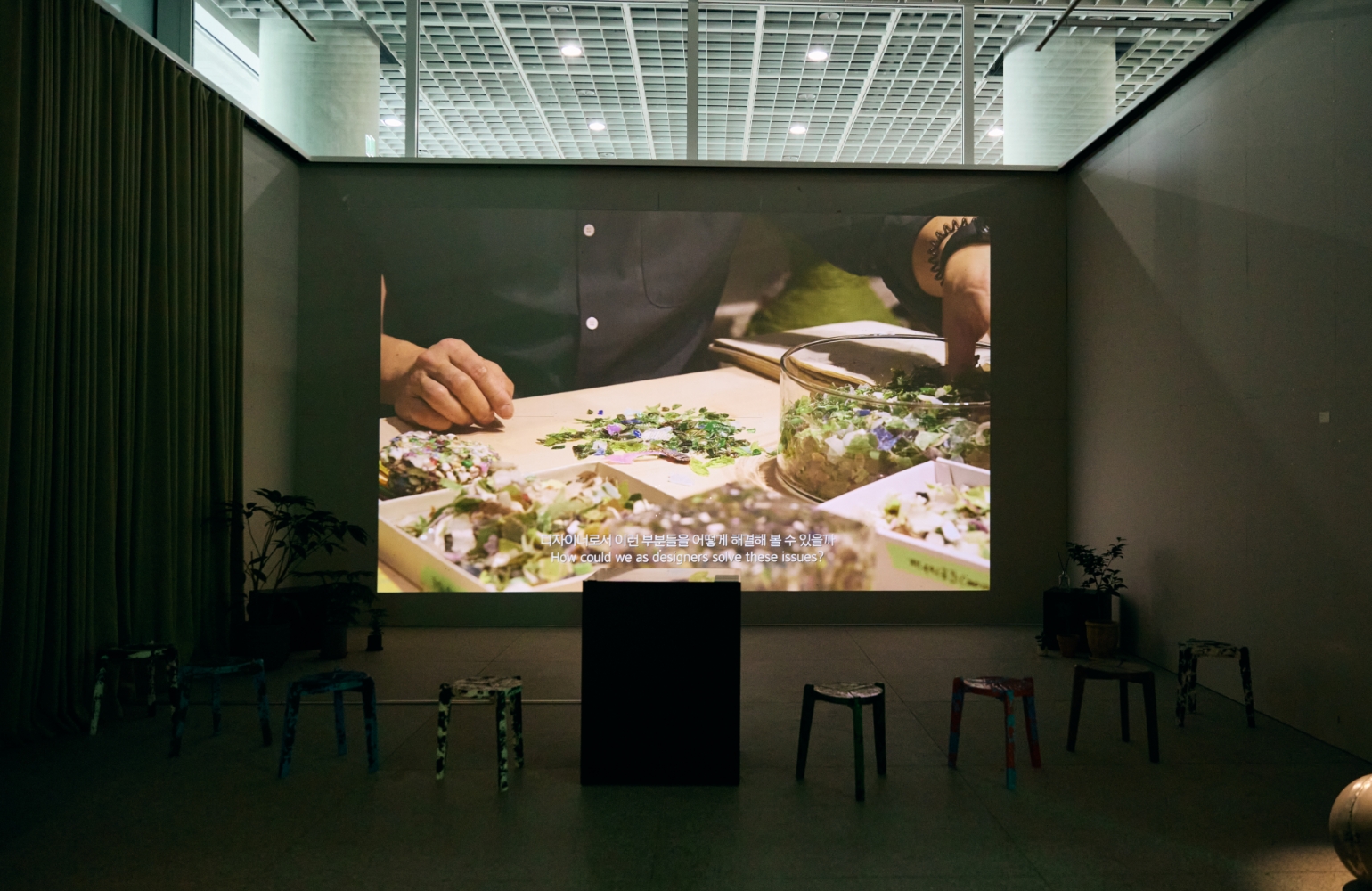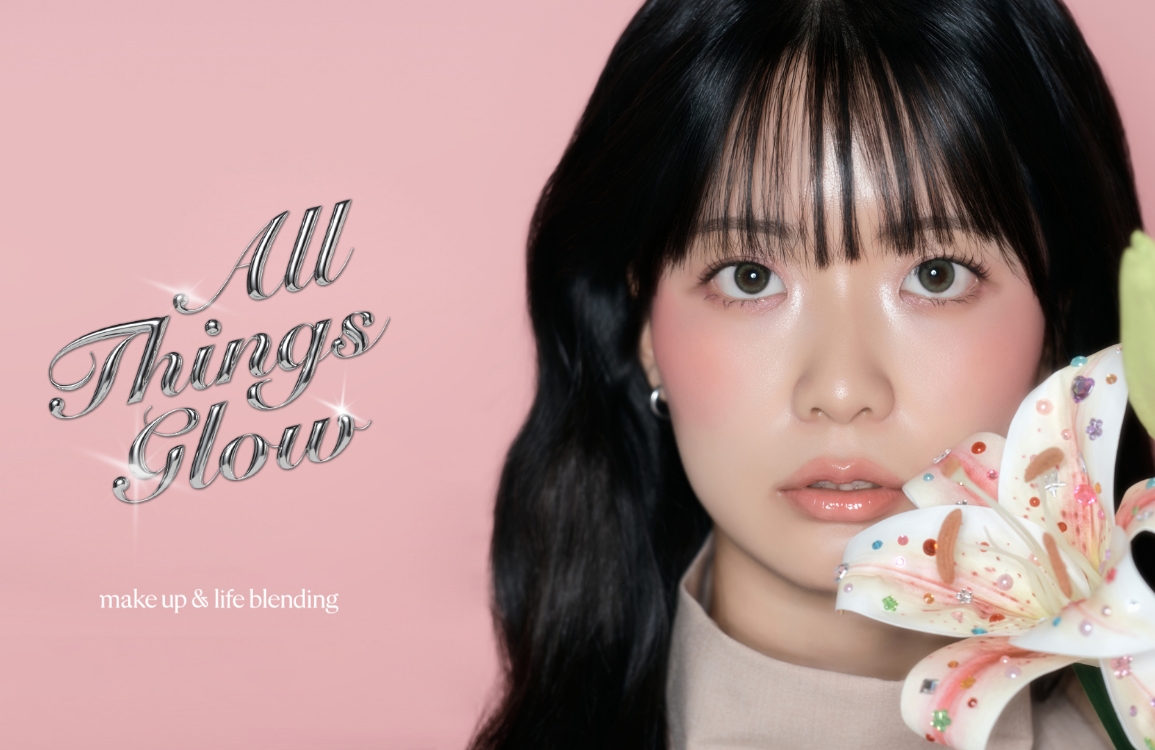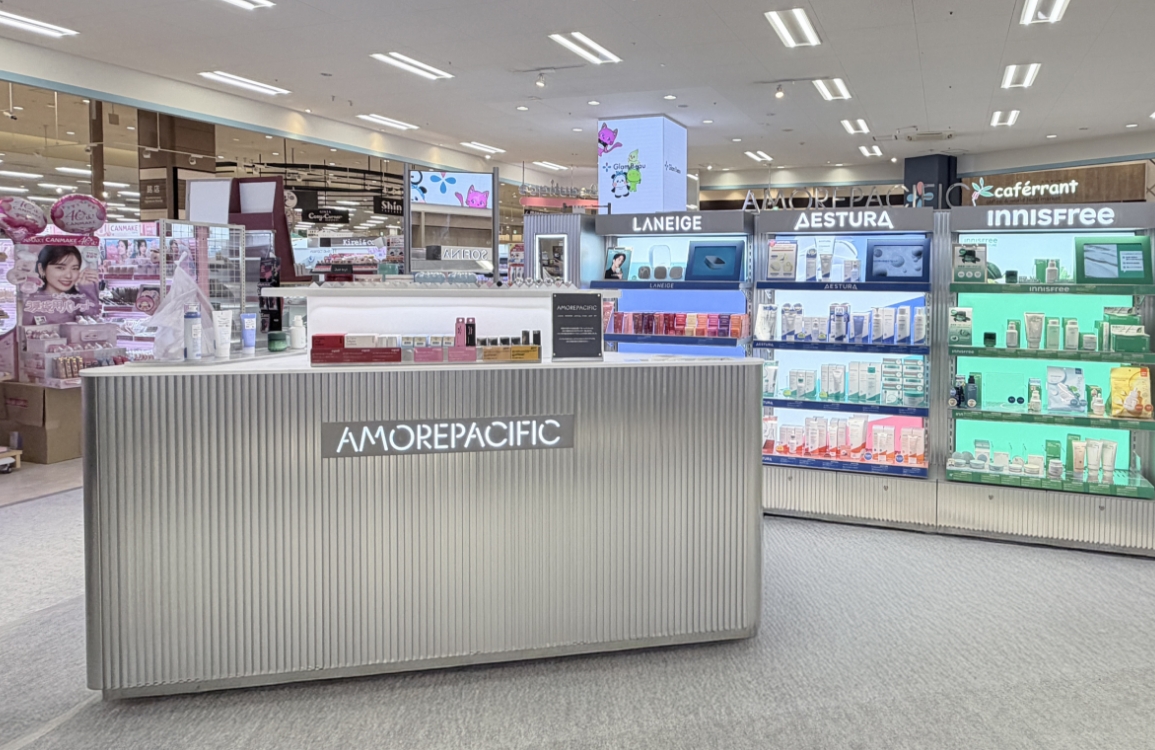Project Gongjakso - Upcycled living product design (Wall clock, Light stand, Tea-table)
Summary
The Next Space team collaborated on a project to create new value from our company’s collected empty cosmetic bottles,
producing various items from panels made of this recycled plastic. These products were designed and manufactured for
practical use in two specific locations: ‘The Middle House,’ a project utilizing a vacant space in Bukchon, and our
New Commerce office, ‘Cafe N.’

Background
What if we could materialize cosmetic bottles that are used once and thrown away so that they can be used again?
The development of the upcycling board started with the problem of cosmetic bottles that we make, use, and throw away. More than 9 tons of cosmetic bottles are collected every month, but most of them are not being utilized. We wanted to share our awareness of the problem of how to deal with the collected plastic bottles and find a way to use them sustainably from a creative perspective, and as a result, we developed plates with Amorepacific’s unique patterns and colors.
The development of the upcycling board started with the problem of cosmetic bottles that we make, use, and throw away. More than 9 tons of cosmetic bottles are collected every month, but most of them are not being utilized. We wanted to share our awareness of the problem of how to deal with the collected plastic bottles and find a way to use them sustainably from a creative perspective, and as a result, we developed plates with Amorepacific’s unique patterns and colors.


Background – Product design
The goal of this project was to use the recycled bottle panels to design and produce practical, usable products. Our design approach
began with a deep understanding of the material’s unique characteristics. The panels, created by our team, were made by compressing
larger-than-usual plastic particles to ensure the printed text from the original cosmetic bottles remained visible. While this had
the great advantage of showing the material’s history, the large particle size also limited the precision of shaping. Precise machining,
like cutting to an exact thickness, was impossible; only vertical cuts using a CNC machine were feasible. Furthermore, since our goal
was to use the developed panels as they were, we needed to create designs that highlighted the material’s flat nature rather than
attempting to create curved surfaces with molds. Taking into account these unique characteristics, manufacturing constraints,
and the properties of the recycled material, we selected and designed a series of lifestyle products.
01. Clock


Background
01. Clock
Although our material is thoroughly cleaned and processed, we considered that the end-users—Bukchon residents at ‘The Middle House’ and the
counselors and customers at ‘Cafe N’—might not have an explicit need for recycled materials. We therefore chose to create lifestyle products
that are not frequently touched, one of which was a wall clock. With smartphone penetration in Korea at 93%, we believe a wall clock today
must function as both a quick time-telling device and an interior art object. Given the material’s processing limitations, our design goals
were to create a clock that could be read without numbers, allowed for a quick check of the approximate time, and had an iconic shape.

Design
We designed the clock with a radial pattern, where each spoke signifies a point in time. To make checking the time faster in situations where
even pulling out a phone is a hassle, we shortened the spokes for most hours, leaving only the main 12, 3, 6, and 9 o’clock axes at full length.
To ensure functionality, we designed the clock around a standard, off-the-shelf clock module, carefully considering the body’s thickness, the
size of the center hole for the hands, and the module’s cover size to determine the final dimensions.





02. Light stand

Background
02. Light stand
We chose to create a table stand with the users of the guesthouse at ‘The Middle House’ in mind. The goal was a product that would harmonize with the traditional
Bukchon Hanok architecture while also complementing the guesthouse’s own kitschy design. Since the opaque panel material does not transmit light, we designed a
shade that provides indirect light, making it suitable as a bedside lamp. To highlight the panel’s characteristics, we used an interlocking assembly method and
made that construction method a central part of the design concept itself.


Design
The stand’s initial design motif was the traditional Korean ‘soban’ (a small, portable table), but due to the vertical-cut-only limitation of the material,
this evolved into a functional and clean-lined hexahedron (a six-faced shape). We devised a structure to connect the body and shade to a standard lighting
fixture. Before production, we created a full-scale foam board prototype to refine the proportions and connection structure.












03. Tea table


Background
03. Tea table
We designed a tea table for the ‘jjok-maru’ (narrow veranda) space at ‘The Middle House’ in Bukchon. A jjok-maru is a narrow,
wooden porch attached to the exterior of a Hanok. To enhance the versatility of this relatively small space where residents
gather to talk and rest, we decided to create a tea table to be a helpful addition.


Design
We envisioned a table that would harmonize with the soul of the Hanok. Drawing inspiration from the lines of the window frames and lattices on
a Hanok’s exterior and the harmony they create, we aimed to design a table where the interplay of light and the negative space beneath it would
create different shapes depending on the viewing angle. Considering the narrowness of the jjok-maru, we adjusted the overall size to be suitable
for floor seating. In line with the project’s sustainable ethos, the table was constructed using only an interlocking panel assembly method,
avoiding any other materials to ensure its recyclability.



- Amorepacific Creatives
- Design
- 진현조, 현영훈, 권지현
- 김빛누리, 이성엽, 현은정
- Photography
- 신상우
- Visual
- 김빛누리, 이성엽, 현은정

























